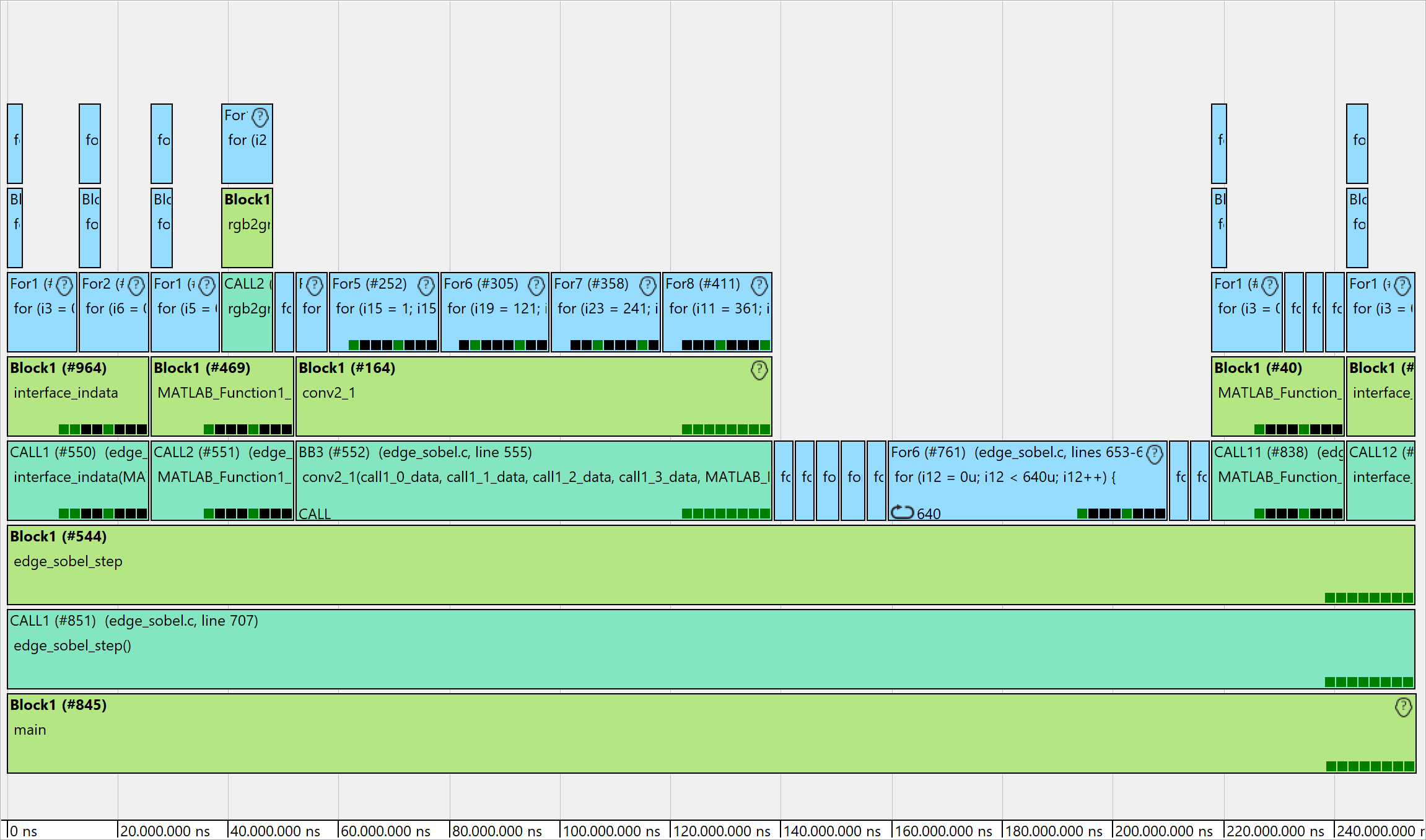emmtrix
Performance
Estimator (ePE)
Know Your Code’s Runtime – Without Running It
Static analysis for fast, detailed performance insights.
Why Static Estimation Makes a Difference
Performance estimation was never easier. With emmtrix Performance Estimator (ePE), developers can gain fast and accurate insights into the runtime behavior of their C code — without ever executing it. Unlike traditional simulation or hardware-based measurements, ePE applies static timing analysis early in the development process — and can be used at any later stage as well and typically delivers results up to six months ahead of a standard automotive HIL setup.
Automation & Reproducibility Built In
The analysis runs within minutes on the developer’s PC or can be integrated into a continuous integration (CI) system. The determined execution times are fully deterministic, offering consistent and reproducible results — a major advantage over measurement-based approaches, which can be influenced by non-deterministic runtime effects. This enables automated, project-accompanying performance tracking, allows for continuous monitoring of timing budgets, and makes it easy to evaluate runnables or SWCs even before full system integration.
Integrated into Model-Based Workflows
A standout feature of ePE is its seamless integration with code generated by TargetLink or Embedded Coder. Thanks to its static approach, ePE can assess even the smallest code fragments without measurement overhead. This enables precise timing insights down to the Simulink block level, empowering function developers with detailed understanding of their model’s performance — even in early development phases.
Key Benefits at a Glance
Early Static Timing Analysis
Design decisions before HIL
Simulink® and TargetLink® Support
Model-based code integration
No Code Exection Required
Static analysis directly on C code
CI/CD Integration for Deterministic Timing
Monitor timing changes during the development
Understanding Our Static Performance Estimation
Static performance estimation is a method for predicting the runtime behavior of software without executing it. This technique analyzes the program’s structure and instructions to estimate how long it will take to execute on a given processor.
Frequency x Cost: The Core Idea
Our method relies on a fundamental principle:
Execution Time = Execution Frequency x Execution Cost
The execution frequency is statically inferred from the control-flow structure of the code—for example, loops, conditional branches, and function calls. This allows us to approximate how often a block is executed during a typical run without requiring any runtime measurements.
The execution cost of each block is either:
- estimated by summing the costs of corresponding C statements (source level) or
- modeled via processor pipeline analysis (based on generated assembly).
Multi-perspective Timing Analysis
To provide a comprehensive view of a program’s timing behavior, our method estimates:
- Minimum
- Maximum
- Average execution times
By default, conditional constructs (e.g., if statements) are analyzed using a 50% branch probability, which can be overridden by the user to reflect domain-specific knowledge. This multi-perspective approach helps identify best- and worst-case scenarios and reveals runtime variability under different inputs.
Techniques to Refine Accuracy
Because static execution frequency determination is challenging, ePE uses several complementary techniques:
- Constant propagation across functions
Infers variable values across function boundaries to resolve control flows (e.g., loop bounds). - User-provided configuration data
Allows input of concrete values (e.g., from JSON, A2L, or DCM files) to refine estimations. - Manual specification
Enables developers to set loop bounds or probabilities when automation isn’t sufficient. - Analysis of ‘unknowns’
Performs sensitivity analysis to prioritize the most relevant manual inputs. - Use of host-level profiling data
Empirical values can override static assumptions when available.
Aggregating the Results
By applying the frequency-cost model to all code blocks, ePE aggregates total runtime. This allows:
- Identification of performance hotspots
- Early feedback of runnables and SWCs
- Support for automated performance tracking
Optional: Processor Pipeline Stages
The processor pipeline modeling considers stages such as:
Instruction Fetch
FETCH
Instruction Decode
DECODE
Shift + ALU
EXECUTE
Memory Access
MEMORY
Register Write
WRITE
Features
- Automatic generation of reports and visualization for more detailed information
- Confidence levels for classification of results
- Easy to integrate into the development workflow
- Fast evaluation for different target platforms
- Static performance estimation based on C code or assembly code
- Integration of simulators or hardware profiling into your workflow
What You Gain in Practice
- Performance estimation early in the development process
- Continuous monitoring of performance changes during the development
- Comparison of performance for different or heterogeneous target platforms
- Detailed information to better understand the timing behavior of your application
- Detect high-runners or critical parts of you software application
- Estimate the core utilization to optimize runnable/task to core mappings
Intuitive Visualization
Figure 1: Visualization of the Performance Estimation
The result of the performance estimation can be visualized using our interactive and zoomable hierarchical program view. The X-axis represents the time, therefore the width of each block depends on the actual duration. On the Y-axis, the control structure of the program can be seen. Additional levels are added for structures like function calls, loops or conditions.
Figure 2: Analyzing Assembler Code
To enhance our static performance estimation solution, the emmtrix tools take applied compiler optimizations into consideration by analyzing assembler code. Together with a model of the processor pipeline, the actual timing behavior of the program on the selected hardware can be predicted with significantly higher accuracy. The advanced mapping between C and assembler code is accessed directly from the GUI and can be used for further inspection.
Some Supported Platforms
emmtrix Performance Estimator has already a wide range of supported target platforms ranging from general-purpose processors (e.g. ARM Cortex-A series or X86) to special-purpose microcontrollers (e.g. Infineon AURIX™ family). In general, the performance estimation can be easily adapted and customized to provide basic supoprt for new processor architectures. More complex and accurate hardware models with respect to the processor pipeline can be supported on demand.
Associated Partners

emmtrix Technologies is an Infineon Associated Partner with over 10 years of experience working with the Infineon AURIX™ microcontroller family and has been actively collaborating with Infineon for the past five years.
Extension & Integration for ePE
Simulink Performance
AUTOSAR Support
TargetLink Extension
CI/CD Workflow Integration
Let's Get in Touch
We believe that the best solutions start with a conversation. Whether you are exploring static code analysis, performance estimation, or code optimization – we’re here to help you reach your goals faster and more efficiently.












